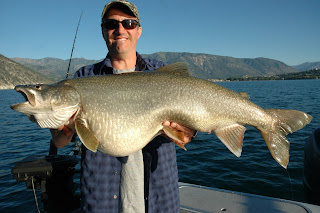On the first day of class I was shocked to learn I would be required to post all my assignments onto a public blog. I did not know what to expect, but I knew it would be something interesting.
I have participated in a couple social networks but never written in a blog. Writing in a public blog really helped me think more about what I was choosing for my topics, what tone to use and who my audience is, it challenged me to really think about what and how I wrote because I knew that the class would be reading it.
There were many assignments where I spent much time searching for a topic, I needed material that could potentially captivate anyone. I had never thought so hard about a topic, my assignments in previous clasees had always given me a prompt so I never had the option to decide! I ended up writing about things I found interesting and fascinating. My chosen topics were groupon, inmates repopulating butterflies, predatory Lake Chelan fish, animal deception, preparing children for swimming and communication in technology. All very different, and that’s what kept the assignments so interesting!
Then not only did the topics change with every post, but my guidelines changed as well - which was very challenging yet taught me very much. We had to present our information in different styles which really educated me and helped to further prepare me for out of school written communication. With the different outlines I had to think critically about what I was communicating and to who and in what tone. I had never done that before! I learned how to present a thing or idea while staying neutral in tone (post 1), reformat and recreate something already written (post 2), how to effectively use my voice to present a topic but still avoid bias (post 3), I had to find a concept and try my best to define it with research (post 5), write an analysis of a process with precautions where I had to really think of how I had to phrase my thoughts to properly convey them (post 6), and finally classify concepts and effectively explain to my audience the purpose and idea (post 8). The formats Professor Kopp had given us seemed so random and strange at first, but looking back on them as a group - they really covered a broad range of writing styles, which was awesome to experience and learn from.
I really enjoyed how we had peer critique. For a few posts we had to go online and comment on a few peoples writing, I thought it was very effective because people didn’t feel forced to say a certain amount so instead of worrying about that they just gave their straightforward opinions. We also had the in class review groups. A few times I was a bit disappointed because I had felt my partners did not try their best in giving me pointers. I felt overall the critiques were a wonderful aide. I got feedback on how I was presenting my thoughts, directly from my audience! Then when I would read others papers I would learn and instantly observe what was effectively communicated to me and what wasn’t - and I would then start noticing those things in my own writing. I think it would have been nice to have some kind of critique, online or in person, of the definition essay. In that essay I did much research (about animal deception) and tried a different approach, it could have been nice to have some feedback to know how to better that post. Overall the critiques taught me lots of valuable information about identifying intentions, considering audience, and choosing the correct tone/style and format for the idea and intention.
The idea of posting onto a blot was at first intimidating, but then became very interesting. I was able to see what others were writing, and get pointers from their work. There were posts where I had difficulty with fonts that wouldn’t match up properly when I transferred them from my computer, and there were a few posts where I wanted to add more pictures but the formatting wouldn’t work the way I wanted it presented. The communication technology post I tried to add pictures of devices, yet no matter what size I made the pictures they would either go in awkward places or overlap text so I decided to just delete them. Some of my titles turned grey and I've been trying to fix them with no luck. I also started reading strangers blogs and was so captivated! I had no idea that blogs were basically mini personal websites. I for some reason had always thought all blogs were similar to diaries. However they are all really different in style and purpose, most are really very interesting!
When I first read the syllabus, I looked over the course objectives and was not completely sure what they were referring to and what and how we would be learning to fulfill them. I have learned so much about writing and communicating, I can say I now understand each outcome. I became aware of all the things we were discussing in class every time I would start to read and write. I used to just read. Now when I read I feel I am going so much deeper into the meaning. The change is so obvious and bizarre to me.
The combination of class discussion, freedom of topics, broad yet concise guidelines, peer critiques, revisions, and submitting our writing onto a blog - distinguished this class completely from all the others I’ve ever taken. Not only did I learn the outcomes which have opened my eyes to my writing and to others, but I also learned about blogs!





